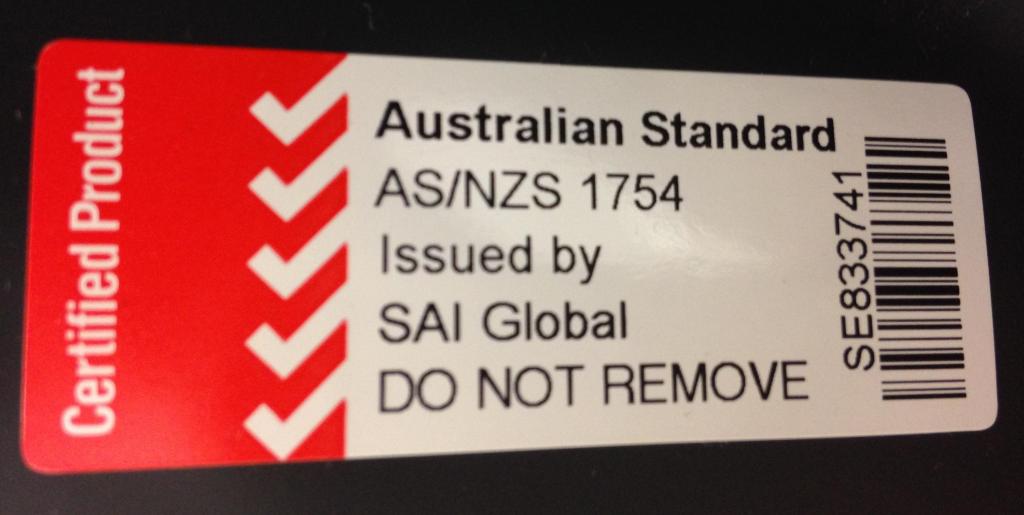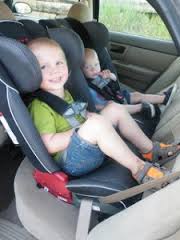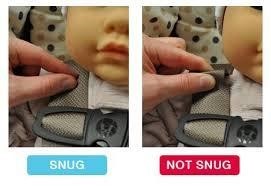Recent Comments
No comments to show.
Posted by admin in Babies 0-6 months, Babies 6 months - 4 years, General, How to, Safety on March 27th, 2016
There is a lot to consider when choosing a car restraint for your new baby. With all the products on offer, the shiny colourful products and the pushy salespeople it can feel overwhelming. We’re often asked what should parents look out for when buying a new car seat/capsule etc? What features are important? What safety certification should they have? Our guide to choosing the right baby carseat or capsule will hopefully help you to make the right choice.

What to look for:
Posted by admin in Babies 0-6 months, Babies 6 months - 4 years, General, Safety on September 28th, 2015
Did you know – Road trauma is the leading cause of death for Australian children up to 14.
You can however keep your children safer from harm by having properly installed restraints and correctly using your car and booster seats in your car. And before you roll your eyes and say, “Yeah, yeah I know all this already I have 4 kids” know this: Various studies have shown that even for parents who are on their third or even fourth child, car seat use and installation is one of the few things that people tend not to get better at.
Correct installation and ongoing use can be a matter of life and death – so please sit down and read.

Once your child outgrows their baby capsule or baby carseat (which are always rear facing) then you’re ready to move them to a convertible carseat. There’s no reason why that seat needs to be forward facing. There are plenty of seats on the market that allow extended rear facing. Legally children can forward face at 6 months of age. But “can” and “should” are two different things. You should always keep your child rear facing until they reach the rear-facing limits of their convertible seat. With most modern seats that will happen from around 18 months old to 2 years plus.
A common misconception we hear from parents is that they are concerned that their child’s legs will be squashed or in a dangerous position while rear facing. The fact is that children are actually at greater risk for leg injuries when they are forward facing in the car because in an accident, their feet make contact with the seat in front of them, which is simultaneously moving backward. Yep – in an accident – everything moves. The result is a compression injury, something that doesn’t happen when the child is rear-facing.

Child Car Seats is an initiative of the Child Restraint Evaluation Program (CREP), a consortium of government agencies and motorist organisations who aims to provide consumers with information to help choose safe child car seats and to apply pressure on car seat manufacturers to only market seats that perform well beyond the Australian Standard.
Posted by admin in Babies 0-6 months, General, How to, Safety on September 7th, 2015
We are often asked which of our baby capsules for hire are the lightest in weight or the smallest in size so to make it nice and easy we’ve prepared a simple comparison table for you here. The table lists all our current capsules for rent and their weight and dimensions as well as their CREP (safety) rating where that rating is available.
| Product | Capsule weight (out of base) | Product dimensions | Pram compatibility | 2nd base available for hire from Rockabye Baby Hire |
|---|---|---|---|---|
| Safety 1st One Safe Infant capsule | 3.5 kgs | H 440 mm x D 660 x W 430 | Safety 1st, Maxi Cosi | Yes |
| Babylove Snap’nGo Series BL620A/2010 | 3.8kgs | H 405 mm x D 660 x W 430 | Babylove, Valco | Yes |
| Chicco KeyFit Plus 79046 | 4.8 kgs | H: 415mm x D: 710 x W 435 | Chicco, Bugaboo, Baby Jogger, Mountain Buggy | Yes |
| Arlo Baby capsule (with or without ISOFIX) | 3.8 kgs | H: 540 mm x D: 745 x W: 460 | Arlo Stroller available for hire | Yes |
| PegPerego Primo Viaggio PP01/2010 | 5 kgs | H 430 mm x D 720 x W 440 | Peg Perego, Bugaboo, Baby Jogger, Phil & Teds, Mountain Buggy | Yes |
| Maxi-Cosi MICO AP (with or without ISOFIX) | 3.9 kgs | H 415 mm x D 760 x W 430 | Quinny, Maxi Cosi, Bugaboo (Mico only), Baby Jogger, Phil & Teds, Mamas & Papas, Icandy, Valco, Joolz, Jane Rider | Yes |
If you have other questions please don’t hesitate to contact one of our friendly staff either via email on jess@rockabyebabyhire.com.au or by telephoning 02 95894942.
Posted by admin in Babies 0-6 months, General, Safety on May 11th, 2015
With so many different capsules and carseats available on the market today in Australia, it can be really difficult to choose. So many brands, names, colours, recommendations from friends and family – new parents can be quite overwhelmed with so much to choose from and so many questions including:
To help answer all of these questions we have put together a summary below as well as some information on safety testing and ratings of our current range of baby capsules for hire.
The website www.childcarseats.com.au is an initiative of the Child Restraint Evaluation Program (CREP), a consortium of government agencies and motorist organisations who share a common interest in improving safety for children travelling in vehicles. CREP provides parents with independent and unbiased information on the levels of child protection from injury in a crash provided by child car seats and the ease with which they can be used correctly.
The Child Restraint Evaluation Program (CREP) assesses the crash protection performance of car seats using three simulated crash tests:
In all tests, crash test dummies that are equal to or above the upper end of the mass limit for each type of child car seat are used to measure the forces experienced by the dummy during the test. The data gathered is then analysed and the car seats are scored based on several performance aspects.
| Product | CREP Safety Test result (out of 5 stars) | Product dimensions and weight | Pram compatibility | 2nd base available for hire from Rockabye Baby Hire |
|---|---|---|---|---|
| Safety 1st One Safe Infant capsule | 5 out of 5 stars | H 440 x D 660 x W 430 3.5 kgs |
Safety 1st, Maxi Cosi | Yes |
| Babylove Snap’nGo Series BL620A/2010 | 4 out of 5 stars | H 405 mm D 660 mm W 430 3.8kgs | Babylove, Valco | Yes |
| Chicco KeyFit Plus 79046 | 4 out of 5 stars | H: 415mm D: 710mm W: 435 4.8 kgs |
Chicco, Bugaboo, Baby Jogger | Yes |
| Nuna Pipa CF-03 | 4 out of 5 stars | H: 470mm D: 745mm W: 450mm | 60 + compatible prams! | Yes |
| PegPerego Primo Viaggio PP01/2010 | 3 out of 5 stars | H 430 mm D 720 mm W 440 mm 5 kgs |
Peg Perego, Bugaboo, Baby Jogger, Phil & Teds, Mountain Buggy | Yes |
| Maxi-Cosi MICO Air MCM 2010 | 3 out of 5 stars | H 415 mm D 760 mm W 430 mm 3.9 kgs |
Quinny, Maxi Cosi, Bugaboo (Mico only), Baby Jogger, Phil & Teds, Mamas & Papas, Icandy, Valco, Joolz, Jane Rider | Yes |
Baby capsules for hire in Sydney – just call Rock-A-Bye Baby Equipment Hire prices range from just $60 for 6 months and all capsule hires come with free professional installation by one of our ACRI accredited restraint fitters.
